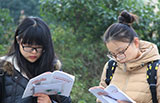Village seeks mediation, not trial, over custody of 1,000-year-old Buddha statue
By Luo Wangshu (chinadaily.com.cn) Updated: 2015-12-03 18:21Lawyers representing a village in Fujian province in its quest to win custody of a 1,000-year-old Buddha statue have agreed to postpone their appeal to a court in the Netherlands where the current owner lives.
Villagers say the statue, which contains the mummified remains of a Buddhist monk, was stolen in 1995, and they have sought to reclaim it from Dutch architect Oscar van Overeem. Van Overeem has said he bought it 20 years ago in Amsterdam.
Liu Yang, a Beijing lawyer specializing in ancient relics, said going to court is the last option.
"Our Dutch lawyer plans to send a letter to Oscar, representing villagers, for better communication and to express goodwill," Liu said. "We still hope to reach an agreement through mediation and avoid the trial."
Previously, the lawyer said they planned to submit an appeal to a Dutch court in November.
Van Overeem has said that he was furious about being criticized as a "thief" and had no knowledge that the statue held "a unique Buddhist mummy relic" until his restorer discovered this. He also said he had never asked for $20 million to return the statue as was reported in the media.
Van Overeem also suggested he might give the Buddha statue to a serious collector or museum as a way to resolve the battle, in exchange for in-kind compensation that was not detailed.
The statue, which grabbed global attention in February after a scan revealed the mummified remains, was included in the Mummy World Exhibition at the Hungarian Natural History Museum in Budapest, which had planned to display it until May. Instead, the museum returned it to the Drents Museum in Assen, the Netherlands, where van Overeem had previously loaned it.
In March, after seeing pictures of the statue, residents of Yangchun pointed out its resemblance to the one that was stolen in 1995. Evidence suggesting the stolen statue was the one shown in Budapest was presented by the Fujian Administration of Cultural Heritage.
The State Administration of Cultural Heritage said later that it would communicate with van Overeem in hopes he would return the Buddha to China.
However, van Overeem said he has proof that the statue did not come from the village. He accused the residents of making up the story and said he could scientifically prove they were wrong. He did agree, however, that the Buddha came from China.
- Analysis: Diabetes, weight loss, high on list of health concerns
- Shanghai foils biggest commemorative coin smuggling attempt
- Famous Beijing wholesale market's relocation moving apace
- Russian jet fighters 'to enhance PLA'
- China to cut pollutant discharge at power plants by 60%
- Academy proposes retirement age timeline
- China vows better copyright protection for music industry
- Foreign HIV/AIDS patients on the rise in China
- Beijing gets back its blue sky as heavy pollution disappears
- 999 center defends its procedures







